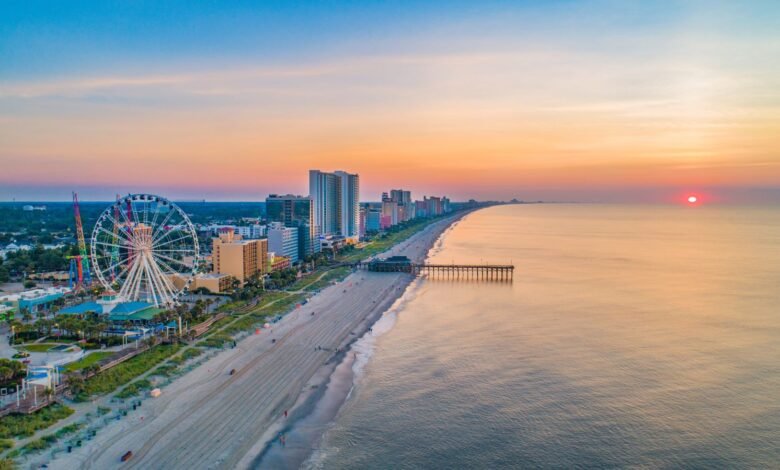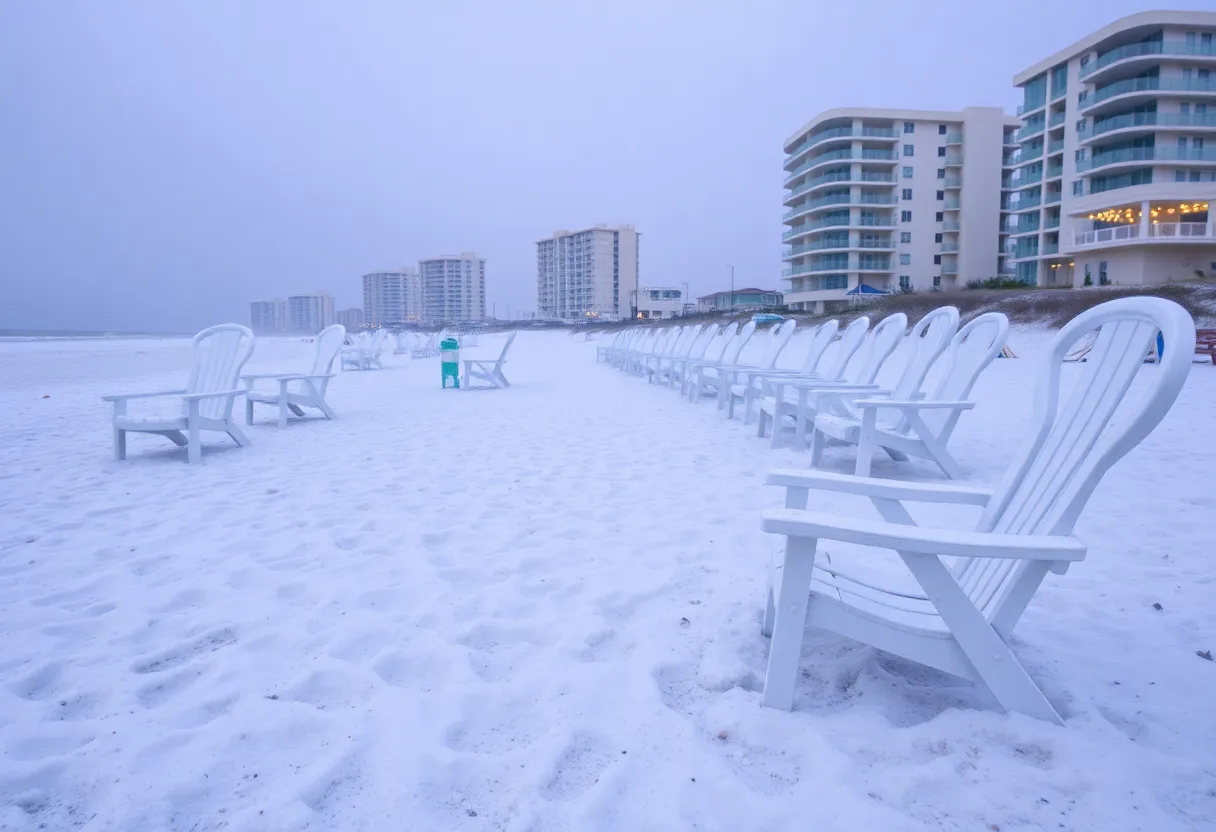Myrtle Beach Weather: What to Expect Year-Round in This Coastal Paradise

Myrtle Beach weather is one of those rare places where the weather and the vacation vibes go hand-in-hand. Whether you’re planning a sun-soaked family vacation, a romantic getaway, or a winter escape, understanding Myrtle Beach weather will help you make the most out of your trip. From balmy beach days in July to quiet, cooler strolls in December, this coastal gem in South Carolina has a bit of everything. Let’s take a deep dive into what you can expect throughout the year—casually, but with all the insight you need to plan smart.
The Basics of Myrtle Beach Weather

Myrtle Beach weather sits along the Atlantic Ocean, so its weather is heavily influenced by coastal patterns. You’ll get plenty of sunny days, a good dose of humidity in the summer, and generally mild winters compared to inland areas. The climate here is considered humid subtropical, meaning hot summers, mild winters, and rain that’s evenly spread throughout the year.
What really sets Myrtle Beach weather apart from other vacation destinations is the predictability of its weather. Sure, like any beach town, it has its unpredictable moments—especially during hurricane season—but for the most part, it’s sunshine, beach breezes, and comfortable evenings. The area averages about 215 sunny days a year. That’s pretty impressive if you ask me.
Temperatures range from the high 50s in the winter to the high 80s or low 90s during the summer months. And even though the humidity can be noticeable in July and August, it’s usually paired with cooling ocean winds that take the edge off.
Spring in Myrtle Beach weather : Blooming Weather and Tourist Buzz
March – May
Spring is one of the most underrated times to visit Myrtle Beach weather . The weather during this season is a near-perfect blend of warmth and freshness. March starts off with highs in the mid-60s, but by May, you’re easily reaching the upper 70s to low 80s. Nights can still be a bit cool, especially in March and April, so packing a light jacket is a smart move.
Another plus? Spring rain tends to come in quick bursts, usually in the form of showers or thunderstorms in the late afternoon. These don’t usually linger, so you can enjoy most of your day without interruption. Plus, after a quick downpour, the air smells cleaner, and the beach feels even more refreshing.
Tourist activity starts picking up in April, but the crowds are still manageable. That means shorter lines at attractions, more space on the beach, and better rates on accommodations. If you’re into golf, spring is peak season—Myrtle Beach weather is, after all, a golf haven with over 80 courses in the area.
Summer in Myrtle Beach weather : Hot Days, Warm Nights, and Beach Perfection
June – August
Summer is peak season in Myrtle Beach weather and for good reason. The weather is absolutely beach-worthy, with average daytime highs in the mid to upper 80s, occasionally touching the 90s. Nights are warm and comfortable, often hovering in the 70s. This is when the town is at its liveliest—with buzzing boardwalks, busy beaches, and endless summer events.
Humidity is at its highest in July and August. You’ll definitely feel it, especially during midday hours. But if you’re lounging by the ocean or dipping in the waves, it’s not a dealbreaker. Sunscreen becomes your best friend, and staying hydrated is non-negotiable.
Rainfall increases slightly in the summer, mostly due to afternoon thunderstorms. These storms tend to come fast and hard but disappear just as quickly. They rarely ruin an entire day’s plans. Just keep an umbrella or poncho in your beach bag—problem solved.
Oh, and a quick note: hurricane season officially starts in June and runs through November. While major storms are rare, it’s always smart to check forecasts ahead of time if you’re traveling during this window.
Fall in Myrtle Beach weather : Cooler Air, Fewer Crowds, Same Great Views
September – November
If you love mild weather and a more peaceful vibe, fall is hands-down the best time to visit Myrtle Beach weather . September still feels like summer, with highs in the low 80s and ocean temperatures warm enough for swimming. By October, things cool down into the 70s, and November brings in crisp air with highs in the 60s.
Humidity drops significantly during this season, making outdoor activities way more enjoyable. This is the ideal time for long walks on the beach, scenic bike rides, or exploring state parks like Huntington Beach or Myrtle Beach weather State Park.
Rain chances start to taper off, and the skies are often clear and bright. Plus, the fall sunsets here? Absolutely stunning. Think orange, pink, and purple streaks lighting up the horizon as the waves crash softly on the shore.
One of the best parts of fall is the thinner crowds. Most summer tourists have gone home, and kids are back in school, so everything from dining to lodging is less hectic and often cheaper. It’s a local secret that early October is one of the best times to visit.
Winter in Myrtle Beach: Mild Chill with a Coastal Twist
December – February
Now, let’s talk about winter in Myrtle Beach weather . If you’re expecting snow and freezing temperatures, think again. Myrtle Beach weather in winters are surprisingly mild, especially compared to other parts of the U.S. Daytime highs average in the mid-50s to low 60s, and nighttime temps usually hover around the 40s.
It’s cool enough for a cozy sweater or light coat, but you won’t need snow boots or thermal layers. The beach may not be ideal for sunbathing during this season, but it’s perfect for peaceful walks, seashell hunting, and enjoying oceanfront sunrises without the crowds.
Rain is fairly evenly distributed through the year, but winter tends to be slightly drier than summer. Skies remain mostly sunny, and when it does rain, it’s usually light. Snow is extremely rare here—it might flurry once every few years, but it almost never sticks.
Winter is also when Myrtle Beach weather turns into a quiet coastal town. If you’re looking for serenity, this is your time. Hotel rates are at their lowest, and while some attractions close or scale back hours, there’s still plenty to do—especially for couples or retirees looking to escape harsh northern winters.
Final Thoughts: Timing Your Trip Around the Weather
Myrtle Beach weather is one of its biggest selling points—it’s friendly, beachy, and never too extreme. Your perfect time to visit really depends on what you’re looking for. Want buzzing beaches and warm waters? Aim for June to August. Prefer tranquility with pleasant temps? Go for October or April. Need to escape snow without sacrificing ocean views? December and January have your back.
Whatever time of year you go, the one constant is that coastal charm. Myrtle Beach weather is beautiful in every season, and with just a little weather know-how, you can make sure your trip is as sunny (literally and figuratively) as it can be.



